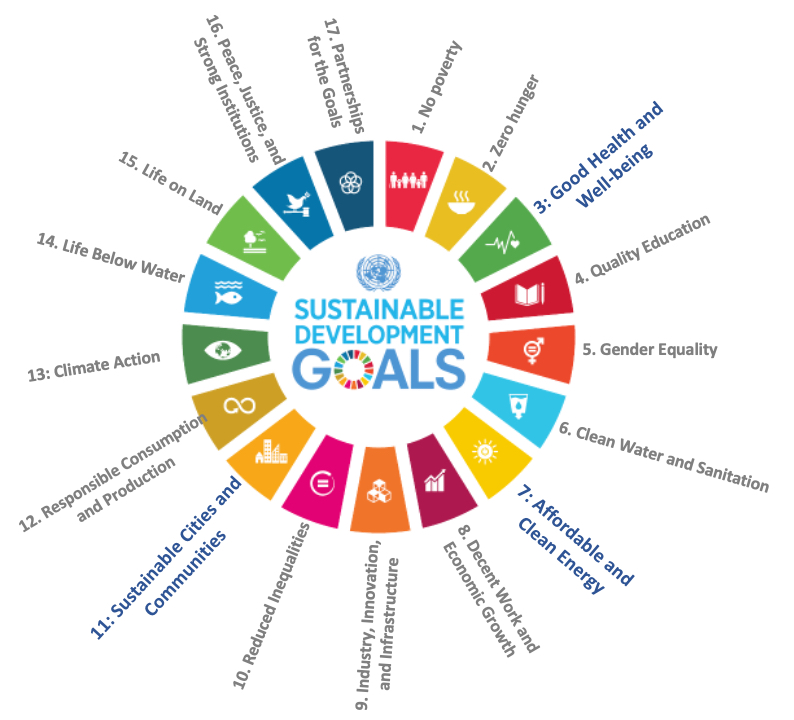The concept of Intelligent Transportation Systems (ITS) and smart mobility can collectively play a vital role in advancing the United Nations Sustainable Development Goals (SDGs) by leveraging new and emerging technologies such as Artificial Intelligence (AI), Internet of Things (IoT), and immersive technologies for upgrading existing transport infrastructures, overall traffic management to reduce greenhouse gas emissions, decrease traffic congestion, and generally improve road safety by decreasing the number of deaths and severe bodily injuries in victims of road accidents.
Relevant SDGs
ITS can help support the attainment of SDG 3, by making transportation safer and more efficient through the process of improving road safety, reducing traffic accidents through real-time monitoring and collision prevention systems, and detecting and minimizing traffic-related injuries and fatalities to ensure that adequate care is provided.
Through smart traffic management systems to optimize traffic flows and facilitating the use of electric vehicles and biofuels, ITS can foster the attainment of targets in SDG 7, aiming at affordable and clean energy for all, with a view to reduce overall emissions. In this quest for energy efficiency through electric and hybrid
vehicles, smart mobility and ITS also facilitates the reduction of greenhouse
gas emissions and combat the impacts of climate change as envisioned in SDG 13.2.
ITS can help attain the targets of SDG 11, which is dedicated to the transition towards sustainable and inclusive cities and communities. In the context of this SDGs, ITS can support real-time traffic monitoring, foster automated public transportation mechanisms based on AI, improve mobility by reducing traffic congestion, and enhance accessibility and safety of transportation to drive better connectivity in urban areas.